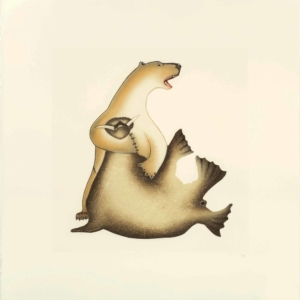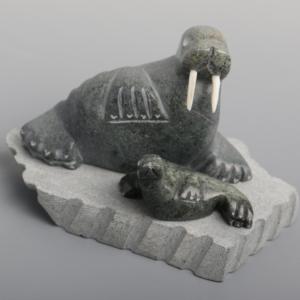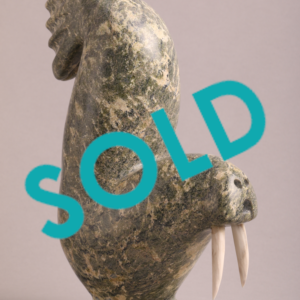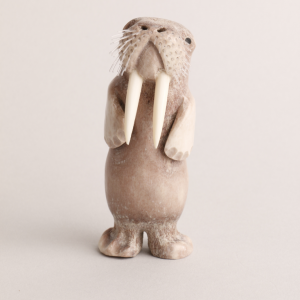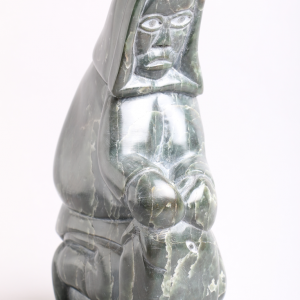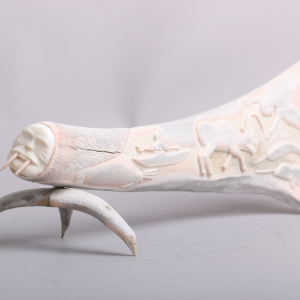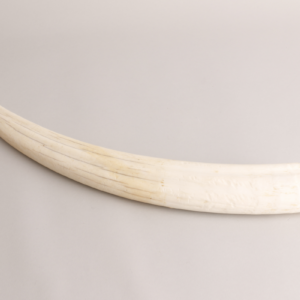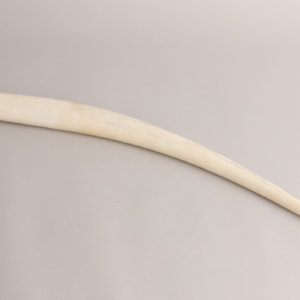Aiviq – Walrus
The most striking feature of the walrus are the upper canines, which are formed into long tusks. They are present in both sexes, but in males they are usually longer, stockier, of more angular cross-section and also straighter, while the tusks of females are usually round in cross-section and have a more pronounced curvature. On average, they grow to 50 centimeters in length; exceptionally, record lengths of one meter are observed. In young walruses, the canines are not yet developed; they do not erupt until six to eight months of age and are usually not visible until a year and a half later because of the voluminous, folded lip.
The walrus provided the Inuit with vital food; its fat was rendered and used for heating, cooking, and as a source of light; its skin was used as clothing, in boat building as a covering, and as a roof for the Inuit semi-subterranean houses. Viscera as well as sinew were fashioned into string and linen, and its bones and ivory teeth were used for a variety of tools and to make art.

